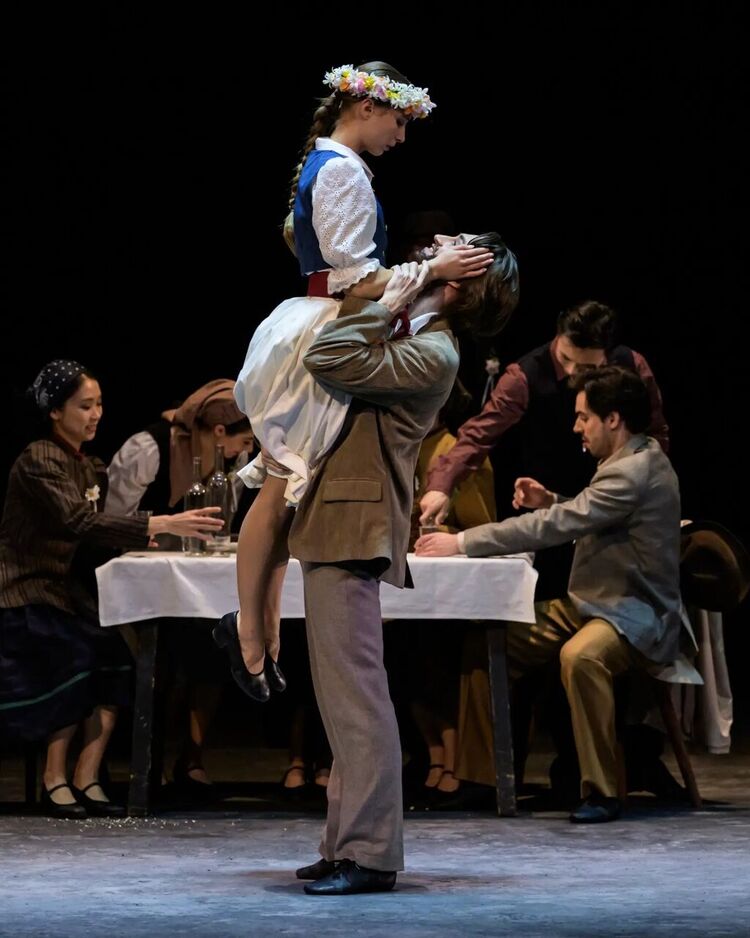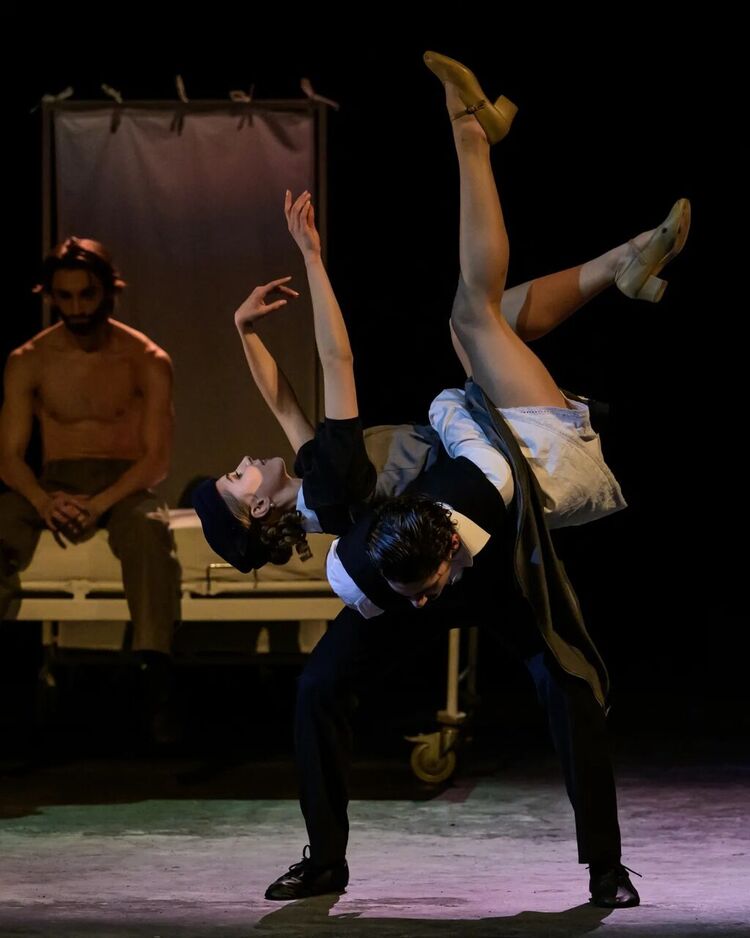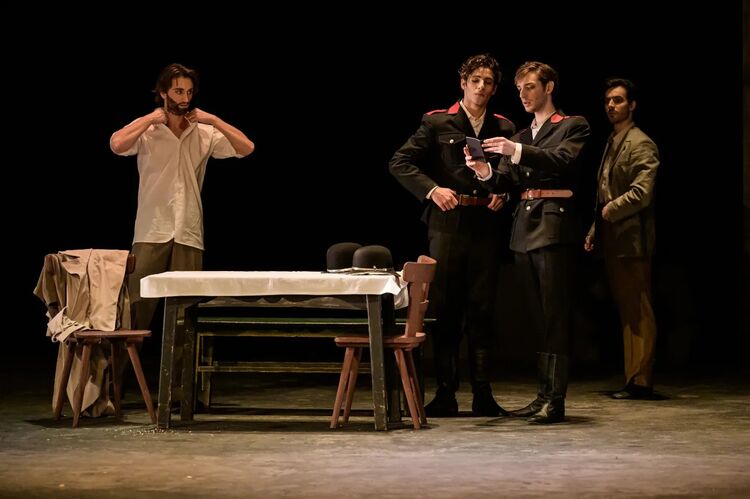Želary as a dance drama
One of the first ballet premieres of the new year took place on the stage of the Moravian Theatre in Olomouc and it was a truly world-class event. Based on the book by Květa Legátová, Jozova Hanule, and also on the script written by Petr Jarchovský for the well-known, award-winning film Želary (2003) by Ondřej Trojan, a unique dance drama was created by the authorial tandem of composer Zuzana Lapčíková and choreographer Hana Litterová.
Both are equal authors of the libretto, they have collaborated for several times and it is evident from the new production. Hana Litterová has been a soloist at the National Theatre in Brno for many years and is intensively involved in teaching and choreographic work. Zuzana Lapčíková still performs in concert, dulcimer and singing is her domain, she has composed several important musical works and has artistically connected with important orchestras and personalities. Ballads, first created for the National Theatre in Brno and later performed at the National Moravian-Silesian Theatre in Ostrava, are well known from her joint work with Hana Litterová.
The dramatic story of the ballet Želary takes place in the wartime years between 1943 and 1945 under pressure and persecution by the Gestapo. Two completely different worlds collide sharply, namely the urban conditions of young doctors and medics in Brno, working in the resistance, and then the harsh, inhospitable conditions in the mountain village of Želary, far from civilisation, where the untrained doctor Eliška, later Hana, had to move quickly. With spare documents, she left together with Joza, a patient from the Brno hospital. It was agreed that Joza would hide and protect her. Given the situation in the village, Hana must marry Joza...

Translating climactic drama into dance language is always a challenging task. How do you do it so that all the main characters dance sufficiently, show their abilities both in terms of movement technique and expression, and yet remain authentic enough? How to blend ballet stylization and dance vocabulary with the natural acting and psychology of the character they are interpreting?
On stage, the wedding is interspersed with ceremonies and folk festivities. The quirky characters and the tangled lives of the locals highlight the uneasy life in the harsh mountain conditions. The war, seemingly far from everyday life, bursts in like a hurricane, the Germans take revenge and, from the other side, the Russian soldiers, who steal and want to rape one of the women, subsequently show their barbarity. The rapist is killed and a battle and an avalanche of hatred and persecution is unleashed. Joza is shot and dies. After a long search, Hana finds him with no signs of life. Her story here comes to a close in contrast to the film treatment and Hana is left alone in her despair.
However, some of the sub-sequences in the dynamically constructed production feel disjointed, with the choreographer running too quickly to dance variations in some dramatically tense situations, not allowing the characters enough time to think as actors and thus go into a deeper emotional state. Individual situations and sub-stories (the complicated relationships of the Kutina family, and subsequently the Gorchiks, complicated by tragic consequences) are told and danced in unnecessarily quick succession.
For example, in the initial scene in the Brno hospital, the nurses perform certain specific medical procedures and suddenly, out of nowhere, they go into a kind of variation of jumps. The Gestapo who shoot the suspected doctors also have to show off their balletic skills.

Hana Litterová is an experienced choreographer, her professionalism, innate dancing skills and sense of logical construction of dance phrases and sequences of movement lead to a refined routine. She has a lot to say on stage. Not to mention the psychology and rendering of the individual figures. The main characters, Hana and Joza, go through a great deal of development despite the difficulties and inequalities of their relationship. Hana, however, would have needed more time to transition from rejecting Joza to a deeply loving harmony.
The young, talented dancer Adéla Bendová in the lead role is a great surprise, the character suits her and gives her tremendous tension. Joza is danced impeccably by Aurélien Jeandot, he has a personal charm and acting is very natural. Sergio Méndez Romero shone as the rude and drunken Kutina, Lucka Vojničová, the herbalist, was danced by Maëva Cotton and Žeňa Bojarová by Sawa Shiratsuki. The set and costumes were created by Dominika Lippertová together with Radka Josková in accordance with the director‘s intentions.

The stylization of folk dances, partly inspired by Slovak-Wallachian elements, goes hand in hand with a distinctive musical score. The excellent Zuzana Lapčíková plays live solo on the dulcimer and with the orchestra and sings. She gives it her all and sends incredible energy to the dancers. The Olomouc ballet company is mostly made up of foreigners and it must be admired that they have coped with the difficult movement of folklore elements and figures in the ensemble scenes.
Written from the premiere on 16 February 2024, Moravian Theatre Olomouc.
Želary
Music: Zuzana Lapčíková
Libretto: Zuzana Lapčíková, Hana Litterová
Direction and choreography: Hana Litterová
Assistant choreography: Bernard Courtot de Bouteiller, Fabien Roques
Musical direction: Petr Šumník
Conductor: Petr Šumník
Design: Dominika Lippertová
Assistant designer: Radka Josková
Lighting design: Tomáš Příkrý



